How Resident Evil 2 fell apart, but was able to become the biggest hit of Capcom
- Transfer
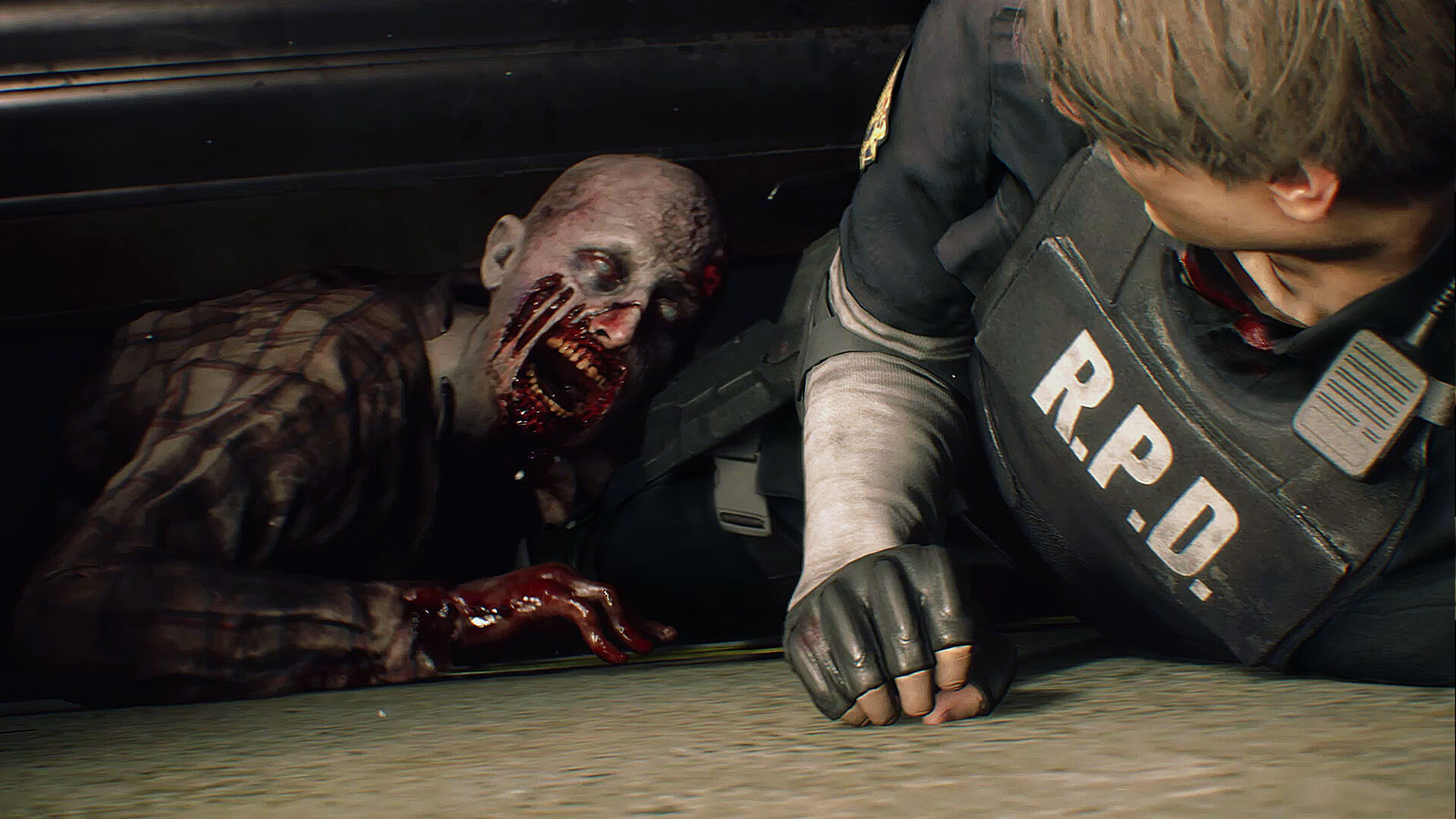
In the late 80s and early 90s, Capcom released games that reached a decent level of sales. Mega Man and Street Fighter did not make huge hits in 1987, especially when compared to the success stories of other companies like Nintendo and Sega, but they showed themselves well enough for Capcom to release sequels, thus creating franchises. Mega Man 2 , which many consider to be the best in the series, overtook the first part in sales and reached worldwide a circulation of one million copies. The success of Street Fighter 2 was even more remarkable: it so surpassed the first game that the original is barely noticeable in the history of Capcom. immediately became successful, breaking the historical trends of Capcom. Therefore, Resident Evil 2
Unlike Mega Man and Street Fighter, the first part of Resident Evilwas inevitable. But for Capcom to keep up with the development of the Survival horror genre it created, Resident Evil 2 had to become better than its predecessor, as happened with Mega Man 2 and Street Fighter 2 . The developers wanted the sequel to become what James Cameron’s “Aliens” have become for their predecessor, “Alien.” : a more revolutionary and ambitious project.
Ideally, the development of a sequel to any video game is based on the experience of its creators, which was obtained when creating its predecessor. The creators seek to improve the quality of the sequel, usually adding elements that were previously unavailable due to lack of time, technology or budget, while at the same time increasing the scale of the game to increase the attractiveness for the players. However, before the start of developmentResident Evil 2, it became clear that due to personnel changes in Capcom, the game will be created in completely different conditions.
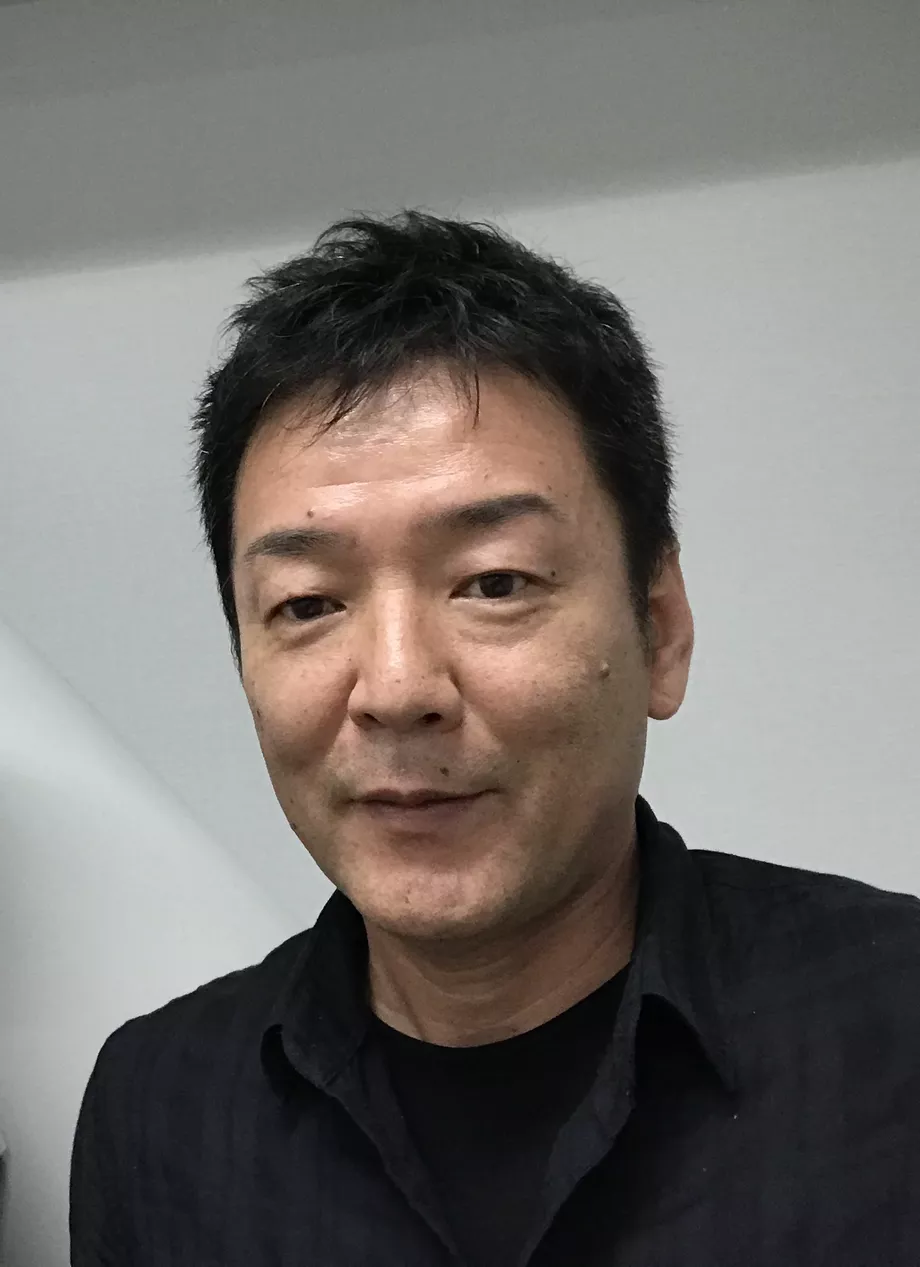
Tokuro Fujiwara
The first change was the departure from Capcom Tokuro Fujiwara in late 1995, before the release of the first part. Since 1983, he was the Grand Master of Capcom console games and mentor of the younger creators of the company, so his departure marked the end of one era and the beginning of another. Fujiwara’s decision to quit was explained by his desire to create new and original games, which he, he said, could not do at Capcom. “In addition to Resident Evil , Capcom wanted to continue creating franchise projects such as Street Fighter. I wanted to develop original games, but I did not see such an opportunity in the foreseeable future, ”Fujiwara says. Officially, he retired from Capcom immediately after the release of Resident Evil, but actually ceased to appear in the office in December 1995, in order to spend all his accumulated weekends, which in his thirteen-year career had accumulated a lot. He had thousands of hours of processing and unused weekends, which was standard practice for Capcom at that time. (in Europe - Tombi! 2
Fujiwara set about creating his own independent development studio Whoopee Camp. In it, he put together a team to develop a 2D platform for PlayStation called Tomba! (in Europe known as Tombi! ), released in December 1997. Despite the lack of huge commercial success, he showed himself well enough to receive a sequel to Tomba two years later ! 2: The Evil Swine Return ). Unfortunately at Whoopee Camp Fujiwara did not achieve the same level of success as at Capcom. No Tomba game sold out well enough to support the company's costs, so Fujiwara hibernated Whoopee Camp. The company continues to exist, but essentially inactive.
Fujiwara worked on many games as a freelance consultant, such as the 2001 survival horror Extermination for the PlayStation 2. For the first time in ten years, he reunited with Capcom in 2006 to create a platform for PlayStation Portable Ultimate Ghosts' n Goblins - remake of the game He created twenty years ago. In 2009, as a designer, he worked with PlatinumGames on a beat-'em-up game called MadWorld. Later Fujiwara took a break for several years, and stopped creating games due to health problems. After recovering, he quietly returned to the gaming industry in 2015 as a consultant. To carry out such work, he brought Whoopee Camp out of hibernation; in 2018, he continued to work under the banner of this company. Now it may seem that his participation in the Resident Evil series is short-lived, but this is not so: for seven long years he cherished the dream of creating real horror gameplay in video games, and if not for his ability to recognize the talent of Shinji Mikami, then Resident Evil could not be as we know it today. Mikami is often called the father of Resident Evil, but Fujiwara definitely became her grandfather. When it's Time for Resident Evil 2 , the grandfather was no longer there.
Another notable loss was Resident Evil screenwriter Kenichi Ivao. Ivao came to Capcom in the early 1990s, after the release of Street Fighter 2 , and initially worked on games such as platformer for Demon's Crest Super NES . While Fujiwara’s influence as an executive producer was rather invisible, the contribution to the Ivao series was more direct and tangible. Ivao created the basic elements of the Resident Evil game universe: T-virus, Umbrella Corporation, STARS members, zombies, Tirana and all other enemies. In addition, he wrote game notes, including the famous “Itchy. Tasty. "(" Itches. Tasty. ") From the caretaker's diary. In Japanese, this phrase is written as kayui uma(か ゆ い う ま), which approximately can be translated as “Itches. Delicious. ”This phrase has become a popular cultural reference in Japan, because the word kayu is a homonym, meaning both“ itch ”and“ rice porridge ”, and the word uma (ま) is a homonym, meaning either“ tasty ”or“ horse". Thanks to Ivao, Japanese Resident Evil fans sometimes joke that the game is some sort of a combination of delicious cereal, itchy cereal, delicious horse, or a itchy horse.
After leaving Capcom, Ivao returned to his native Tokyo and joined Square, where he became director of Parasite Eve 2 Final Fantasy XI and- sequel inspired by the Resident Evil survival horror, the plot of which was based on the novel. He also worked on the MMORPG scriptsFinal Fantasy XIV . It is difficult to imagine the universe of Resident Evil without the foundation laid by Ivao. His departure meant that the Resident Evil 2 team would have to look for a new script writer, which had a huge impact on the development of the game.
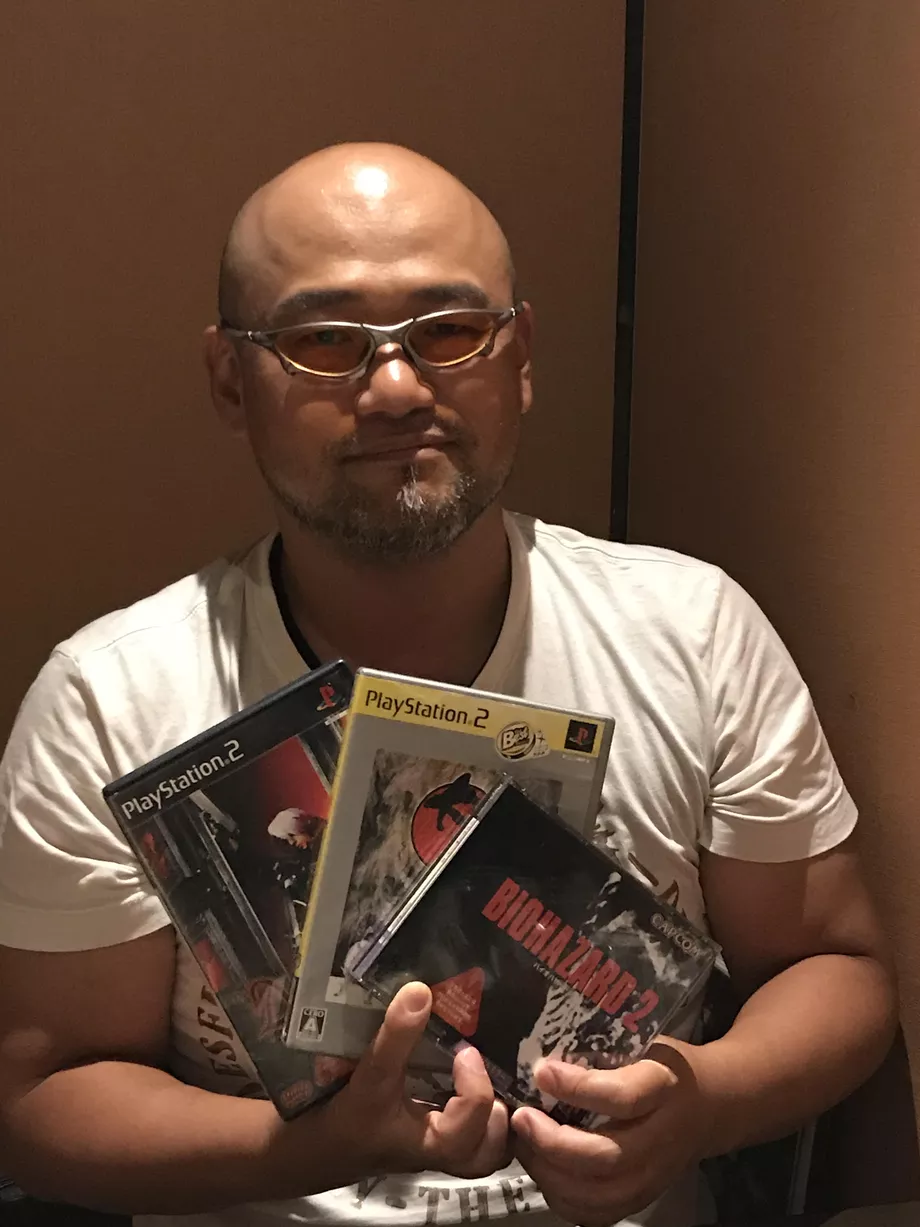
Hideki Kamiya
Now Shinji Mikami, who became a significant figure in Capcom thanks to the successful leadership of the project Resident Evil , decided to play another role in the sequel and become a producer. This task is more concerned with budgeting and project management than with creativity. Therefore, as the director of Resident Evil 2, you had to choose another person. Mikami wanted to pass the reins to a younger colleague in order to develop his professional and creative skills. Among the many talented people in his team, Mikami noticed the 25-year-old Hideki Kamiya, who recently joined the company.
Kamiya, like many creators, had a modest origin. He was born in Matsumoto, from childhood he loved games, he had a NES and he played arcade machines. He also liked drawing. After completing the university, Kamiya wanted to work in the gaming industry, so he sent resumes to several companies. He received a job offer from two major publishers: from Capcom, to the position of designer, and from Namco, who needed an artist. In the end, Kamiya chose the first and went to work in April 1994. Soon he underwent a reshuffle, like most new employees in Japanese companies in the first year of work. After professional training, Kamiya performed simple tasks, like quality control and simple planning, and then he joined the team of the original Resident Evil.. There, Kamiya was the designer of the environments at the Spencer Manor, but his most important contribution to the ENT series was the names of the characters, including Jill, Chris, Wesker and others. “I drew inspiration from various sources, including porn magazines,” Kamiya told me on a rainy autumn evening in October 2017, trying to remember how he came up with these names.
Of course, Kamiya’s talent was much more than the ability to give names to characters, so Mikami soon noticed his potential. One evening in mid-1994, Mikami told Kamiya: “You are a dark horse among beginners. Either you fail miserably or you will achieve great success. ” Although Kamiya admits that he was quite violent in his twenties, all his colleagues described him as diligent, thinking and hardworking: Mikami considered these properties vital for successful project management. When it was time to choose the director of Resident Evil 2 , Mikami summoned Kamiya to a meeting in the spring of 1996 to make his decision official, almost the same as Fujiwara chose Mikami about three years before. For reasons that he still did not fully understand, Kamiya became director of Resident Evil 2 .
"Resident Evil 1.5" and the appearance of Noboru Sugimura
Games in the genre of Survival horror are not designed for everyone. Not to mention the fact that they are intended for an adult audience, their eeriness and frightening images require a certain level of preparedness to avoid screams and panic. Therefore, it was rather ironic that Hideki Kamiya was now sitting in the chair of the director of Resident Evil 2 . Despite his new position as head of the creative development of the acclaimed sequel to the most successful horror of the time, Kamiya was never a fan of movies and horror games. He admits that it is easy to frighten him, and when he sees violent and grotesque scenes, he is troubled, and even the dark death scenes from Resident Evil , in which people are eaten by zombies or decapitated by Hunters, may be too strong for him. However, Mikami chose him to guideResident Evil 2 , that is, Kamiya needed to overcome his dislike for horror, or to transfer this duty to someone else. Over the next two years, Kamiya tried to keep his best.
Unable to completely distance himself from his horror horror, Kamiya decided that Resident Evil 2 would adhere to the basic gameplay of its predecessor, but still focused on action. This development of the game was a reflection of his love for Hollywood action films. In the original Resident Evil , which became an early game for the PlayStation, the heroic combat abilities were weakened, which resulted in a slow gameplay. Having made minor additions like automatic weapons and faster enemies, Resident Evil 2basically continued to stick with the original. But instead of an isolated mansion in the forest, the action was moved to the streets of Raccoon City. This meant that there would be more zombies on the screen (up to seven at a time, which is twice as large as the original, where there could be a maximum of three zombies). In the sequel, the new characters of the two scenarios were to appear, including characters such as officers Leon S. Kennedy and Marvin Branag, civilians Ada Wong and Robert Kendo, young motorcyclist Elsa Walker and teenage girl Sherry Birkin (most of the names on the early development stages were different). Kamiya invented unique long scenarios for Leon and Elsa in the same way as for Jill and Chris in the first part. Eager to make Resident Evil 2a unique product, Kamiya decided that the game would be weakly connected with the plot of the original game, although it would develop in the same universe.

Resident Evil captured the imagination of players back in 1996, so the sequel attracted considerable attention from the press and consumers in North America and Japan. Publicly Resident Evil 2 was first shown at the spring Tokyo Game Show 1996. Although the game was still in development, players could already see improvements in graphics and gameplay. Among the fans, the excitement began to grow and expectations rose strongly, which in turn increased the pressure felt by Kamiya and his team. The pressure was also exerted by the Capcom management. Having avoided the threat of bankruptcy due to the success of the original game, Capcom now felt much better, although it recovered and not completely. One or two mistakes could again bring serious problems to the company. Therefore, Capcom could not lose its advantages.Resident Evil 2 had to become successful, just as it was with Street Fighter 2 . All summer and autumn of 1996, the Kamiya team continued to develop environments, a scenario and a gameplay system. By the end of this year, they were able to complete about 70 percent of the project.

Yoshiki Okamoto
Approaching completion, Resident Evil 2 should have been tested by Yoshiki Okamoto, as it was with the original in late 1995. In fact, at the time of coming to the position of executive producer Tokuro Fujiwara, Resident Evil had a rather rough look, but Okamoto turned out to be even more dissatisfied with the state of Resident Evil 2 . In particular, it seemed to him that the visual component with its surroundings filled with bright neon light and the Hollywood action elements were in conflict with the true horror gameplay. Simply put, the game is not very scary. The project was also hampered by many other personnel problems that Mikami said in an interview from the 1998 book Research on Biohazard 2 -final edition-connected with a large number of young and rather inexperienced developers in the team.
In addition, history was a much more serious than expected obstacle. Okamoto believed that the plot and the script were mediocre and uninteresting, and the game as a whole lacked originality. The Resident Evil series was the first Capcom game in which the plot became an important part of the universe. In the Mega Man, Street Fighter and Ghosts' n Goblins series, the plots were simple and with few dialogues. In these games, the plot could be completely abandoned. Goals set for Resident Evil 2 team, become unprecedented for the entire Capcom story. After Ivao left, responsibility for the plot fell on Kamiya. He carefully tried to work in the style of Ivao, while at the same time adding his own style. Nevertheless, the lack of real experience in writing scripts was obvious to Kamiya. In its current state, Resident Evil 2 was not close to Aliens , which Capcom originally wanted to create.
The team needed to change the script, but no one else from the company had a reliable replacement. Therefore, Capcom decided to seek help outside the company. Okamoto decided to contact Noboru Sugimura, a well-known writer in Japan, who by 1996 had accumulated an impressive portfolio of works on Japanese television over the past two decades, includingSuper Sentai Zyuranger (in the West adapted as the Mighty Morphin Power Rangers (“Power Rangers”) ) and Kamen Rider (in the West adapted as the Saban's Masked Rider ). Sugimura was a fan of the first game, so he accepted the invitation from Okamoto. At the end of 1996, Sugimura visited the Capcom Tokyo office and met with Mikami and Kamiya, who came from Capcom headquarters in Osaka.
Sugimura played the last build of Resident Evil 2. After passing, he immediately offered Mikami and Kamiya to give their feedback. As writer Sugimura, it seemed that the plot lacked the depth and integrity of the subject matter, which he considered to be key elements of creating the universe, attractive to gamers, and superior to Capcom’s achievements in the first part. The idea of "integrity themes" Sugimura considered vital, so he criticized Kamiya for creating the plot without reference to the original. "It's horrible! We need a close connection between the two games! "- affirmedSugimura. He believed that Resident Evil should turn into a full-scale gaming brand, in which games should be linked to each other deeper than it did with the Mega Man and Street Fighter series, whose minimalistic plots did not define their individuality as gaming franchises. Sugimura suggested a provocative idea to stop developing the current build and start all over again. Mikami and Kamiya during this meeting could not decide on this. They told Sugimura that they would discuss it with the team and then contact him.
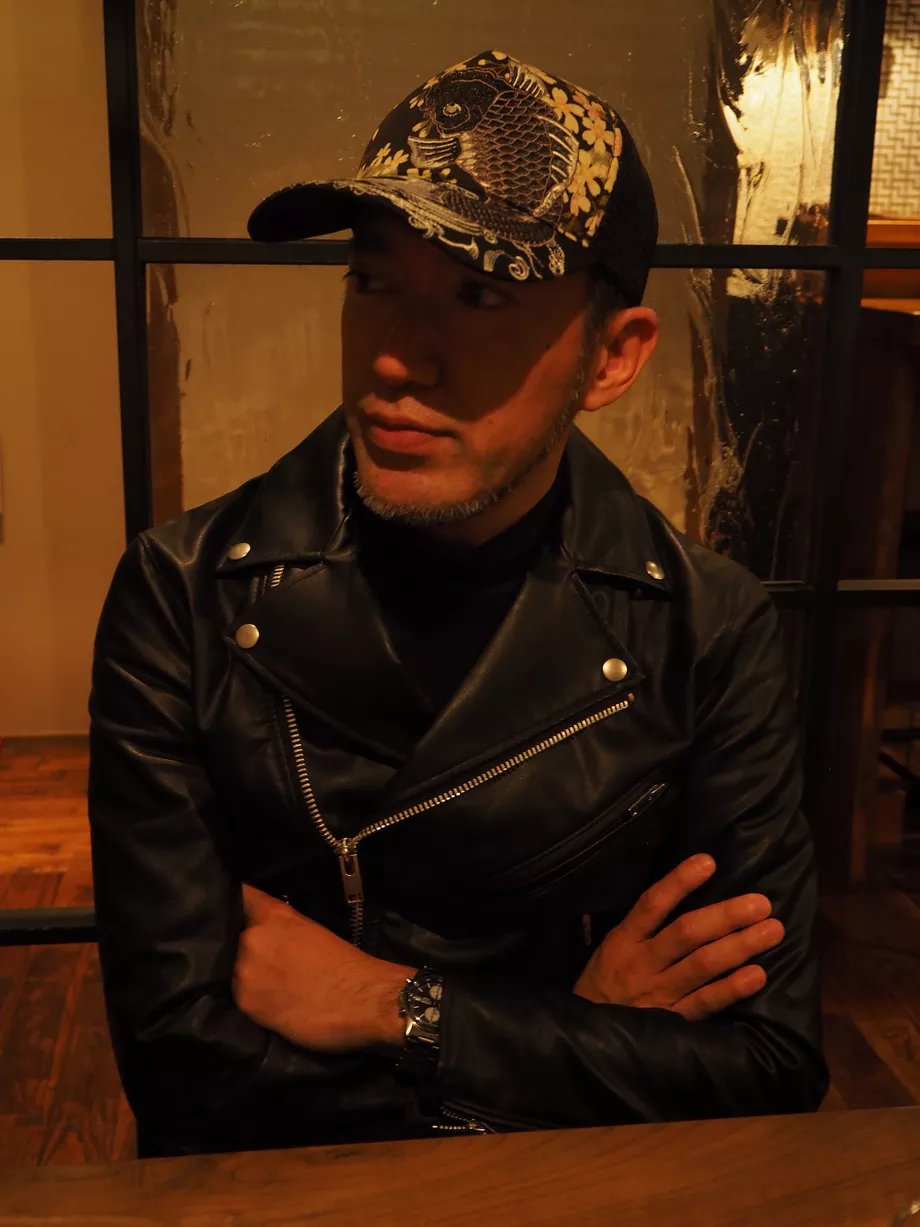
Shinji Mikami
After the meeting, Mikami and Kamiya took an express train, which reached Osaka in three hours. During the trip, they discussed Sugimura’s proposal. Although he spoke badly about the game, both agreed that Sugimura pointed to the right moments that are hard to ignore. It was at that moment that Mikami and Kamiya realized what had to be done: the entire existing assembly of Resident Evil 2it is necessary to completely redo it, and take Sugimura on board so that he points their vessel in the right direction. Such a serious move led to the fact that the game was postponed for a year, which was still a long time in the era of PlayStation. Although the creation of a game on schedule today can take from three to five years, in the 1990s such long development periods were infrequent, and often served as a signal of problems in production. Despite the wasted efforts and financial damage to Capcom, Mikami and Kamiya made a decision. Okamoto analyzed Sugimura's feedback, many of which reflected Okamoto’s original aspirations. He supported Mikami and Kamiya, thus making the decision official: Resident Evil 2will be thrown away, postponed and re-created. “We decided to cancel the game because we knew that it would not meet the expectations of the players,” Okamoto said.
When Kamiya was asked about his feelings at the time of the official cancellation of Resident Evil 2and whether he regretted it, he unequivocally stated that it was the right decision to start all over again. “The game really was a piece of manure. Boring, with a lack of vision, a pathetic copy of the horror game, ”Kamiya explains colorfully. “To be honest, after its cancellation, I was relieved. It was my first project as a director, so I lacked experience. I like to experiment with different ideas to see what works and does not work. Another reason for the failure of the game was the lack of my vision. When I take on a project, I usually do not have any specific vision. I love to experiment and see what suits us. ” When asked if he was thinking about giving up his position, it was an unheard of case in Japan, where the only failure could end his career prematurely - Kamiya answered stoically: “No, not once”.
When the news of the cancellation spread inside Capcom, many team members were confused. A whole year of development has been thrown away, and the morale of the team has fallen. Some went so far as to privately meet with Mikami and ask him to change Kamiya to another director. But Mikami did not impress such requests. He rhetorically asked: "Why then do not you become a director?" No one decided to take the place of director. Kamiya was safe, at least at that time. However, everyone had to go back to the very beginning. During the second round of development, Kamiya could not just rest on his laurels. No one would have suffered another failure, not even Mikami, who supported Kamiya and became his only defender in front of disappointed team members.
Initial versionResident Evil 2 destroyed, but not forgotten. The developers gave her the codename “Resident Evil 1.5”, so as not to confuse it with the release version that they were working on. The number “1.5” should have meant the development of a prototype that occurred between Resident Evil (“1”) and Resident Evil 2 . Most games change over the period of time between the original concept and the finished release; such transformations are usually hidden from the public until the game reaches the release date. But since “Resident Evil 1.5” was actively covered in the press before the project was restarted, Capcom recognized and openly declared its existence as a canceled prototype Resident Evil 2. For Capcom, this was evidence that it was necessary to start from scratch if the situation required it. The games have evolved so much that external assistance (in this case, Sugimura) can increase the chances of the project and uncover previously inaccessible opportunities. The cancellation of the project was a turning point in the history of Resident Evil, because it was the first step in creating a holistic and interconnected narrative. continuing to this day. Capcom also learned that not all of its games should follow the path of different parts of Mega Man or Street Fighter, which had weakly related plots. Part of the prototype development engine even gained a new life in another action game - Onimusha: Warlords , released in 2001 for the PlayStation 2.
The edited trailer “Resident Evil 1.5” was included as a bonus material in the Japanese version of Resident Evil: Director's Cut Dual Shock Ver. released in August 1998 (after the final release of Resident Evil 2 ). He gave fans an idea of what the game could be. Fifteen years later, in 2013, the unfinished, but playable demo of the prototype managed to be leaked to the Internet. A community of modders with varying degrees of success tried to turn the demo into a playable product that matches the initial vision of the development team. Although gamers may consider the prototype an important relic of game history, Kamiya sees the idea of returning Resident Evil 1.5 without enthusiasm: “To be honest, no one should play such a bad game.”
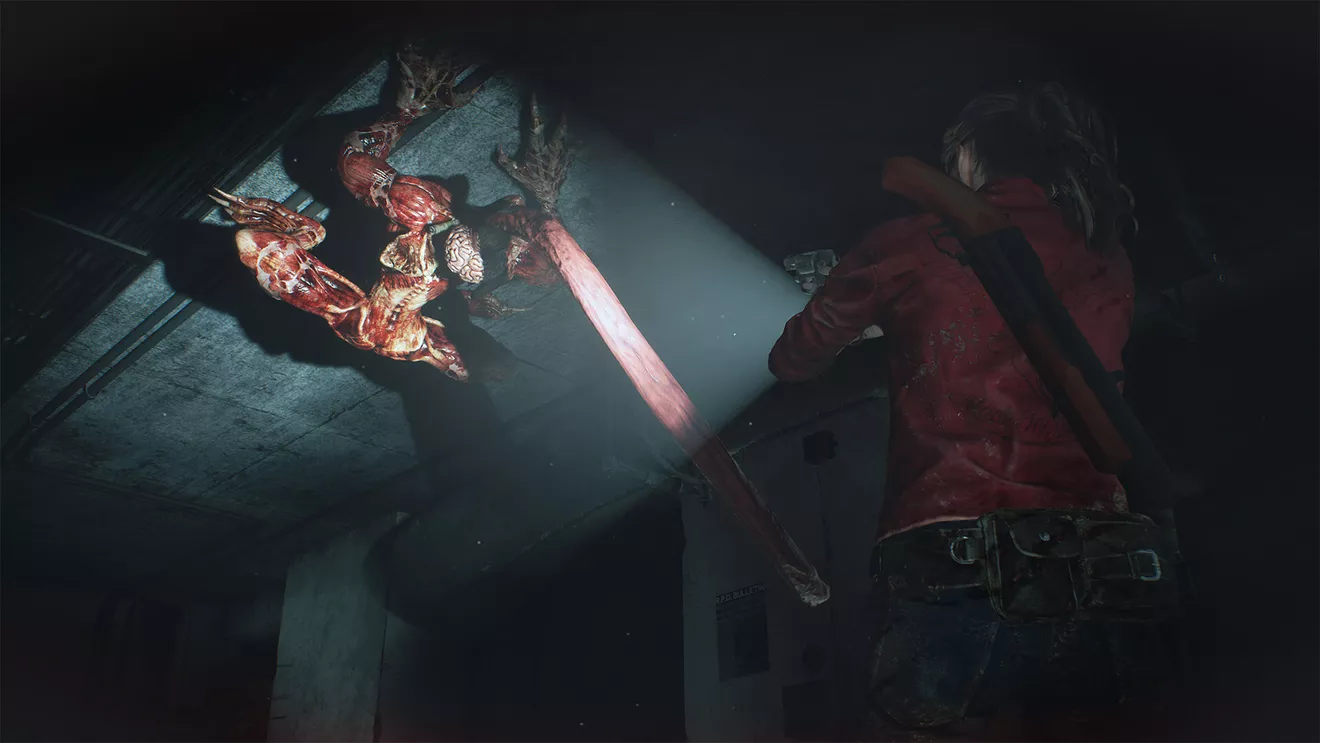
Ремейк Resident Evil 2 для PC, PS4 и Xbox One придерживается той же структуры, что и оригинальная игра, но с переделанной графикой и геймплеем.
Камия наносит ответный удар: перезапуск Resident Evil 2
Hired by Yoshiki Okamoto as a screenwriter for Resident Evil 2, Noboru Sugimura didn’t waste any time. Considering the importance of well-written stories for games, Okamoto established in April 1997 the independent company Flagship Co., Ltd., which was to develop game scenarios. Okamoto became the head of the new company, and Sugimura was appointed head of the scripting department. Although theoretically they worked in a separate company from Capcom, Flagship and Sugimura were closely associated with the Resident Evil 2 team and stood at the helm of developing a new project.
First, Sugimura learned what can be removed or redone from Resident Evil 1.5 for a new game. Although the design of Resident Evil 2was created from scratch, not all of “Resident Evil 1.5” was completely dropped. Sugimura decided to re-use the design of some characters to match the chosen new direction. He also decided that the composition of the characters of Resident Evil 2 should be directly connected with someone from the first game. As a result, he decided to replace Elsa Walker with a similar, but new character: 19-year-old Claire Redfield, who became the younger sister of Chris Redfild. Now the game had a direct connection with the first part, which was lacking in “Resident Evil 1.5”. The design of Leon S. Kennedy, Ada Wong, Marvin Branag, and Robert Kendo was transferred from the prototype almost unchanged, and they were given expanded or altered roles.
Sugimura also decided to keep Racoon City as a background, especially since it was one of the few elements linking the game to the original. As in the original concept of Hideki Kamiya, the scale in comparison with the original has become much larger. Unlike the quiet, isolated, and claustrophobic corridors of Spencer's estate, Racoon City was filled with zombies. Three months after the events of the first part, Leon and Claire arrived in Raccoon City, where they unintentionally fell into the center of a zombie epidemic. They seek refuge at the Raccoon Police Department (RPD), one of the most iconic entourage of the series along with the Spencer House. There all fun begins. Sugimura suggested that RPD have a background explaining how the building turned into a cluster of puzzles. “During the development of Resident Evil 1. 5, the RPD structure did not make any sense, ”Kamiya explains. "Sugimura suggested the idea that the police station used to be an art museum, and therefore strange riddles are scattered throughout the building."
Another element taken from Resident Evil 1.5 was the presence of two main characters. However, unlike the original game, now their stories did not develop in complete isolation. Kamiya and Sugimura together developed a new mechanic called “zapping system” (“jumper system”). Leon and Claire explore the same locations, and many puzzles for them are the same or similar, but since their scenes occur at the same time, players must complete both scenarios in order to see the whole plot and the true ending. From time to time, the paths of Leon and Claire overlap, so sometimes actions in one scenario directly affect what happens in another. The most significant is the decision about which of them, Leon or Claire, will get a certain weapon; players must weigh the pros and cons, because it can simplify the passage of the first scenario,
Zapping system has added another level of depth: the presence of scripts "A" and "B". In scenario A, Claire is chosen, and in scenario B, Leon is selected. The opposite: Leon in A and Claire in B, is also possible. The elements of the plot and gameplay (enemies and objects) vary depending on the selected combination of scenes. In general, there were two combinations of four different scenarios. In scenarios B, there appears a unique enemy pursuer dressed in a T-102 Tyrant cloak, whom Western fans usually refer to as “Mr. X”. He will become one of the most famous monsters of the series. Although the zapping system as a result identified the individuality of Resident Evil 2, clearly highlighting the game against the background of other parts, in fact, it was implemented in the later stages of development. Kamiya decided to integrate the concept of two intersecting plots, the idea of which came to him at the end of the development of the first game, when it was too late to implement it. Kamiya recognizes that in all scenarios there are repetitive elements, for example, both characters must open the same doors with the same keys, but also notes that an obsessive desire for maximum realism would make the game less exciting.

From a technical point of view, the team managed to make minor changes to the game engine, mainly concerning graphics and animations. The first Resident Evil was an experiment in creating a three-dimensional video game on the PlayStation, but now the team has accumulated the skills and experience that has proven itself in technical improvements Resident Evil 2 . Character models and backgrounds have become more detailed, and characters when getting wounds are now slowed down and held on to the side. Enemies due to improvements in game AI have become faster and more aggressive. This is most noticeable in animation bosses, faster and more menacing than in the first game.
One of the odds of the development process was that Resident Evil 2was released on two CDs. The finished game on disc 1 contains Leon’s script, and disc 2 contains Claire’s script. From a technological point of view, it was possible to place all the data Resident Evil 2 on a single 700-megabyte CD, as in the original. Initially, Capcom planned to do so. Nevertheless, the team made a miscalculation in the algorithm for calculating the size of the audio data of the game, which was noticed too late. Mikami recalls how he learned about this problem from software developer Yasuhiro Anpo. Anpo called Mikami, who was working on a separate floor from the rest of the team. “Anpo told me that there was a problem. But he did not have time to explain, because I hung up! ”Laughs Mikami. "Anpo had to come to me and say that for Resident Evil 2It will take not one but two disks, ”Mikami recalls the unexpected news. He was a producer, which means he was responsible for the budget of the game. The problem absolutely required a recalculation of expenses. The Capcom manual was not at all enthusiastic about the development process. This led to higher costs for manufacturing and transportation, because a thicker double-disc jewel case was required. However, given the fact that Resident Evil 2at this stage, and so behind schedule, the team did not give time to reprogram sound algorithms. Capcom conceded and allowed to release the game on two discs. Kamiya, reflecting on the 20th anniversary of the game in January 2018, said that this move was caused by his youth and recklessness, but this accident still left its mark. Even despite the fact that the team did not initially consider Resident Evil 2 as a two-disc game, in the end these are positive results: the game began to be felt from the point of view of the average consumer more ambitious, and hence more qualitative than the single-disc original.
Meanwhile, Sugimura rewrote the plot of the sequel, making it more ambitious and exciting than the plot of the original and "Resident Evil 1.5". He improved the story by creating deeper roles for supporting characters, such as Ada, a mysterious spy working for an unknown organization, and Sherry, the 12-year-old daughter of Umbrella Corporation researchers responsible for developing the G-virus, which could create even more powerful bio-organic weapons, than zombies infected with the T-virus from the first game. In contrast to the rather one-dimensional relationship of the characters in the original, caused by a limited budget and poor voice acting, the relationship between all the characters in Resident Evil 2 has become more diverse; They contained elements such as fear, tension, trauma, naivety, love, friendship, and family ties.
Due to the improved sound quality, the plot of Resident Evil 2 was presented better than in the original. Resident evil 2became the first game for which Capcom delivered the voice of a professional recording studio outside of Japan. When creating the first part, Mikami and other employees had to work with amateur and non-professional English-speaking voice actors found in Japan. In the sequel, the cast of actors was significantly improved. In particular, actress Alison Court voiced Claire, and she will play this role many times over the next 14 years. The soundtrack composed by Masami Ueda, Susa Uchiyama and Xiong Nishigaki consisted of sullen and melodic compositions that managed to squeeze orchestral sound from the PlayStation sound chip. The music was so well received by the players that in 1999 the soundtrack of Resident Evil 2along with tracks from other Resident Evil games, was performed by the famous New Japanese Philharmonic Orchestra. Many fans today remember such well-known themes as rock and roll composition in the captions of the ending B or the themes of the bosses related to the mutant Birkin and T-102 Tyrant.

Also in Resident Evil 2there were more additional game modes than its predecessor. The 4th Survivor became the most famous, the protagonist of which becomes the mysterious agent Umbrella, codenamed HUNK. This mode was created by the scheduler of Katsuhiro Aoyama systems as a bonus scenario that can be unlocked under certain conditions in the main scenario. Thanks to this, for the first time, players could play for one of the “bad guys.” The idea of a mini-game appeared at the later stages of development, when the team of creators had just enough time to add an additional mode before releasing the master disk. "The 4th Survivor" was stitched from the finished resources of the main script, and the HUNK animations, according to Aoyama, were completely identical to the animations of Leon. To avoid creating a completely new character, the team decided to use a character in a mask. In the other mini-game “The To-fu Survivor”, the main character, as the name implies, becomes a character resembling a huge piece of bean curd with arms hanging in the air, armed only with a combat knife. This bonus creation is the rudiment of the testing phase of bugs, in which a piece of tofu was used to test the recognition of character collisions with enemies.
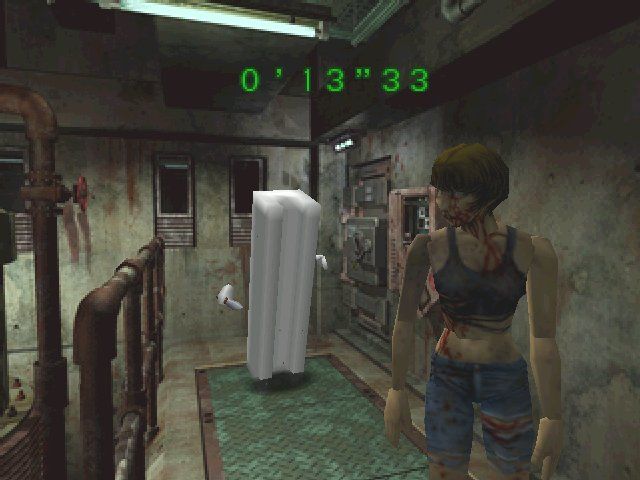
Due to the fact that the character's name consists only of capital letters, for many years fans have been pondering what HUNK means - is it an abbreviation for something concrete. Aoyama says that HUNK is just his name. The American from the Resident Evil team, who wished to remain anonymous, asserts that “initially HUNK should have been called Hank, but the developers were sealed, and they also wrote the name in capital letters. That is why his name is stylized in this way, although it makes no sense. ” Indeed, in Japanese katakana, “Hank” and “Hunk” are spelled exactly the same, ハ ン ク ( hanku), due to the lack of differences in Japanese between the sounds / æ / (A) and / ʌ / (U). In Japan, nouns, whether proper names or not, are often capitalized. Most Japanese developers do not know English well, and therefore less attentive to grammar and punctuation; Many people told me that writing in capital letters makes it easier for developers to find key concepts in multi-word concept documents. The same can be said about the word “To-fu”, which could arise because someone from the development team did not understand that in English “tofu” is written without a hyphen. Kamiya refutes the assumption of the error writing HUNK / Hank.

Resident Evil 2 hits sales records
And so, after a costly and lengthy production cycle, in which one prototype was thrown into the trash and development began again from scratch, in December 1997, Resident Evil 2 was finally ready. Release in North America was scheduled for January 21, 1998, and in Japan for January 29. Capcom hoped to sell two million copies in a short period of time - a very high level for video games in the 1990s, when the industry was much smaller than the modern one. Resident Evil 2 was released under the careful supervision of both Capcom and Resident Evil fans from around the world.
The reaction was much better than Capcom could have hoped. Immediately after the release of Resident Evil 2Sold in huge quantities and received excellent reviews from critics. In Japan, almost 1.4 million copies were sold in just four days, which instantly made the game a platinum bestseller; it took a whole year to reach this bar of the first part. In 1998, with a circulation of one million copies at the time of release, only the Final Fantasy company Square and Dragon Quest sold to Enix, which shows the level of popularity of the Resident Evil brand, achieved since 1996. Resident Evil 2 was very popular in the United States, where more than 380 thousand copies were pre-ordered, which accounted for 60 percent of the initial production run of 633 thousand. The game earned 19 million dollars, earning a place in the Guinness Book of Records of the 1999 edition. She even overtook Final Fantasy VII andSuper Mario 64 . Despite the fact that the Capcom USA branch at that time still had a very small scale and limited marketing resources, Resident Evil 2 turned the series into one of the most profitable Capcom franchises, as a result of repeating what Street Fighter 2 and Mega Man 2 did in her series: she took an excellent foundation and made her even better. Capcom successfully created an analogue of what “Aliens” have become for “Alien” .
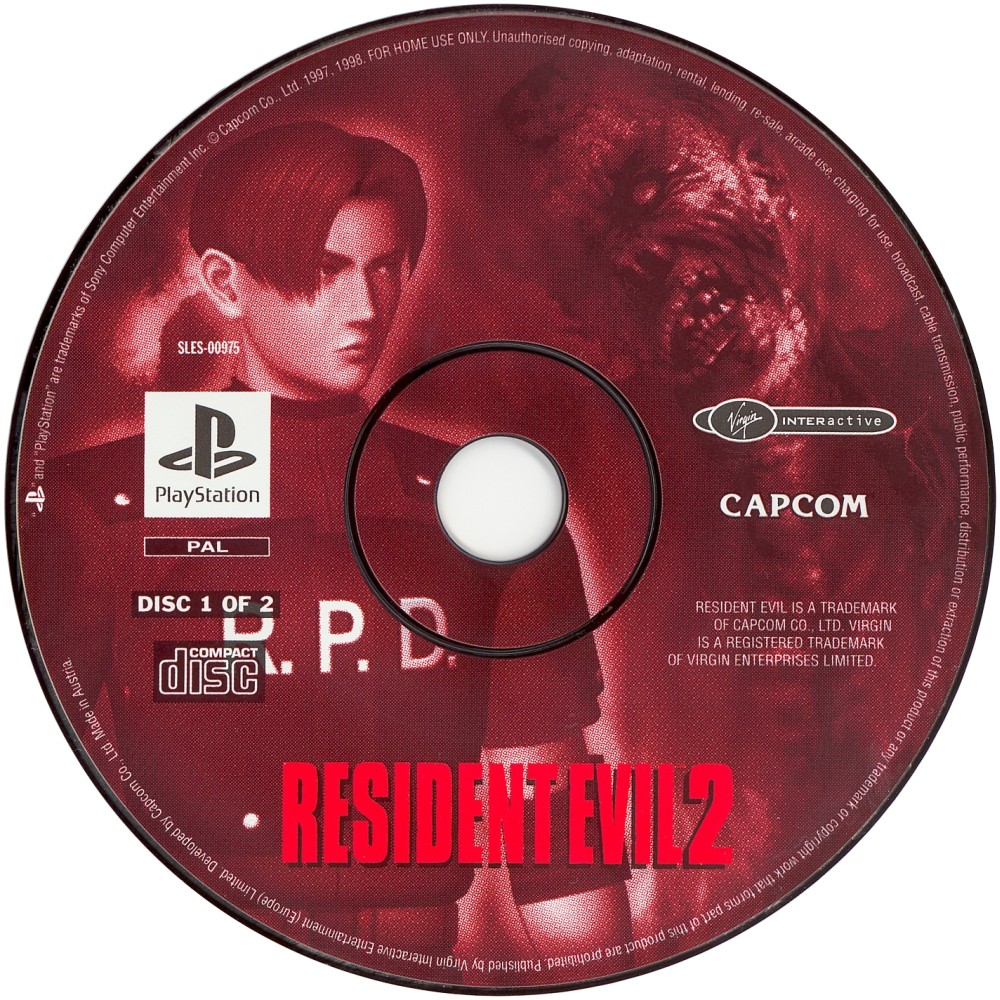
The success of the game provided Capcom with financial gains that enabled employees to pay dividends. At the time of release, Resident Evil 2 Capcom introduced a bonus-based incentive system in which employee salaries depended on the sales of the games they were developing. Selling 4.96 million copies worldwide, Resident Evil 2 was very profitable for the development team. Mikami and Kamiya especially complained about how low salaries were during the creation of the first Resident Evil . In an interview with Polygon in 2014 , Mikami admitted that "[his] salary when creating Resident EvilIt was probably lower than the employee who works for the first year. In fact, [Mikami] could not marry because of [his] financial situation. " Resident Evil 2 allowed each team member to achieve significant financial stability, although the gaming industry is notorious for Japan for its low salaries and long working hours."
Resident Evil 2 has been successful with critics. She received positive reviews from all of her current popular gaming media in the United States, including IGN, Electronic Gaming Monthly, GameSpot and Official US PlayStation Magazine. On Metacriticshe earned a rating of "89 out of 100" and an average user rating of "9.2 out of 10". It is impossible to overestimate how much progress the sequel was compared to the original: it became bigger and better in almost every parameter. Perhaps the exception may be the elements of horror themselves - someone thinks that in the original they are stronger. But Resident Evil 2 is also not terribly bad in this respect, the game has its share of frightening and disgusting moments. If we also take into account the more dramatic and complex storyline created with the help of Sugimur, we can say the following: despite the fact that Resident Evil gave birth to this series in the survival horror genre, it was Resident Evil 2 that turned it into a full-scale gaming franchise.
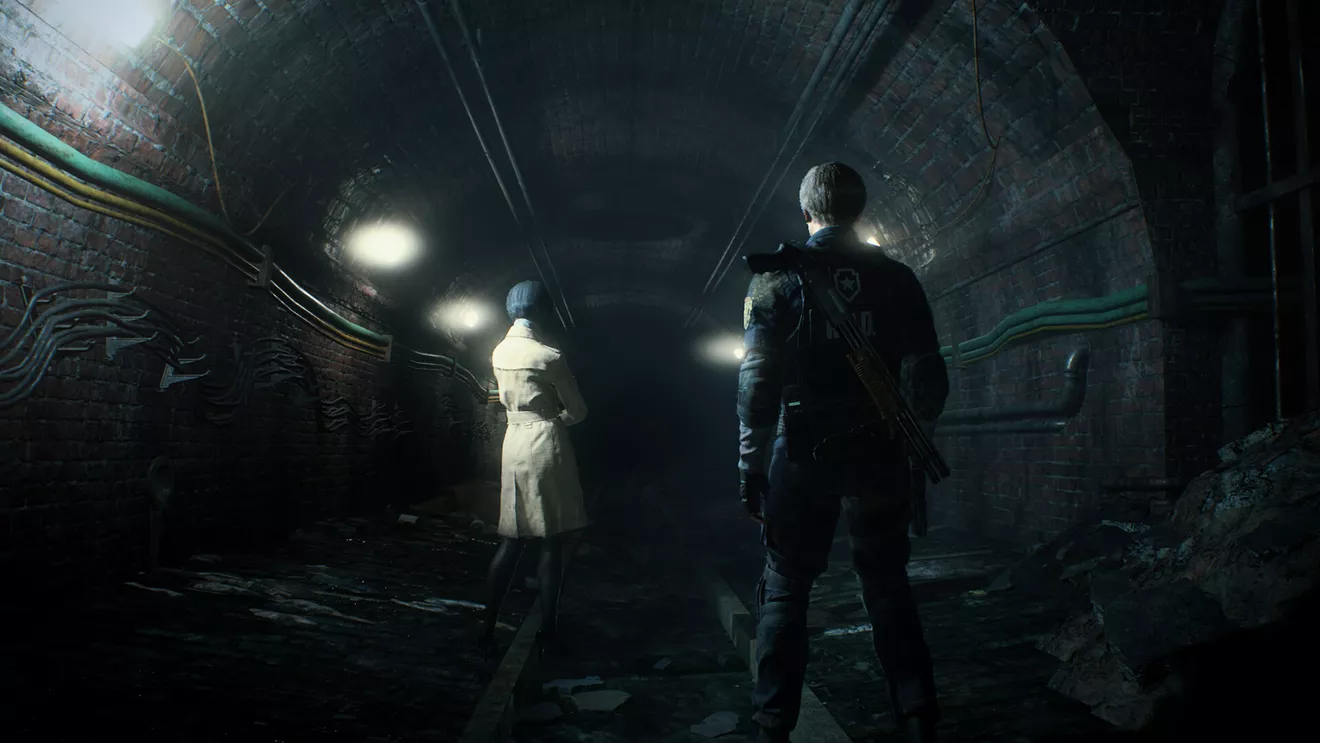
Ремейк Resident Evil 2 — один из наиболее впечатляющих ремастеров на сегодня.
Спроси у своей мамы: размышления Хидэки Камия
The tremendous success of Resident Evil 2 was exactly what Hideki Kamiya needed after such a difficult experience. The abolition of “Resident Evil 1.5” rejected the project one year ago, instilled in the minds of some of its colleagues doubts about its leadership capabilities and almost led to a decline in the Capcom franchise. Thanks to the unshakable support of Shinji Mikami Kamiya did not abandon his goal - the release of a revolutionary and high-quality Resident Evil 2 . Kamiya won, but he was still waiting for a further successful career. Kamiya always reminded that he would never have coped without the support of Mikami. “Without Mikami-san, I would not have become the person I am now,” says Kamiya.
But the most important link in the Resident Evil 2 teamStill, the relationship between Kamiya and Noboru Sugimura has become. During our interview, Kamiya mentioned the name of Sugimura much more often than the others, including Mikami. It is also noteworthy that Kamiya always called Sugimura a Japanese respectful address “Sensei”, which is usually pronounced in relation to teachers or people who have become masters in their craft. For Kamiya, Sugimura became a master of plot creation, whose leadership helped to bring Resident Evil 2 back on the right path. “Sugimura-sensei was my father’s age,” recalls Kamiya. In Japan, age and seniority are the fabric of society, which largely determines how two people communicate with each other. Preference is given to elders who are often considered sources of wisdom and instruction.
It was Sugimura who carefully created and put in context almost every plot element of Resident Evil 2 , combining them all into a coherent and interesting universe. Nevertheless, few can say that the Resident Evil plot is worthy of the great written masterpieces of our time, but Sugimura did not even strive to achieve this goal. He gave Resident Evil 2 characters and a story to which fans of the game got attached, as was the case with fans of other Sugimura works, such as Kamen Rider and Super Sentai. More importantly, Sugimura became the leader that Kamiya needed. “He truly loved Resident Evil,” explains Kamiya. "I learned a lot from him." Over the following years, their relationship continued and outgrown just a business connection. Kamiya retells the story of how he got into a moto-accident, because of which he was in the hospital. When Kamiya was lying on a gurney, recovering from the operation, his mother came with a roll from Sugimur. Kamiya, thinking that these were working materials, opened the package in front of his mother’s eyes, and to his embarrassment, he found five pornographic books there.
Today Kamiya is one of the most recognizable creators of the gaming industry. He is a Senior Vice President at Platinum Games. On social networks, he earned a certain reputation due to his colorful vocabulary and word- picking when communicating with the followers of his Twitter account (@ PG_kamiya). Kamiya, who writes tweets in Japanese and English, often mimics those who send him messages that he considers to be empty, unintelligible, redundant, false or inappropriate. He especially doesn’t like questions about games he hasn’t worked on and the topics he has talked about before. If you want to chat with Kamiya on Twitter, it is better to first study his post history, so that you will not be told to ask your mom for an answer and not be offered “to eat g ...”, or worse, you will not be blocked from viewing and answering his tweets .
At first glance, Kamiya may seem to be a grumpy and inaccessible "star." Even I was a little nervous before our meeting in October 2017, fearing that I would bother him with questions that he had already answered many times. However, in real life, Kamiya is the exact opposite of Twitter personality. He is very friendly, open and friendly. Kamiya, whom most people see on Twitter, is, in my opinion, just a character. His Twitter persona is an alter-ego like an actor-resler. “When I write posts on Twitter, I speak as if I’m chatting and drinking with someone in a bar. I do not want to keep the appearance of decency, as it happens at work, ”explains Kamiya.
Western people are accustomed to the idea of freedom of expression in social networks, but in Japan only a few take such liberties; It is often expected that famous people should express their opinions in a restrained manner so as not to attract undue attention. In the games industry, excessive criticism of fans, customers, competitors and other companies is not approved, which makes Kamiya a very noticeable exception to this rule. Other gaming workers who tweeted at least half as provocative as Kamiya’s posts would have been reprimanded, but not Kamiya himself. In an interview for Polygon, taken in April 2017 from former boss Kamiya Tatsuya Minami, he spoke about Kamiya's tweets like this: “So far, everything he said on Twitter was very close to the forbidden line, but did not overstep it. I never asked him to delete anything. But he pushes this forbidden line away when he decides to use curses he knows in English. ” Probably, Kamiya's online persona works well due to his status as a successful, charismatic creator in the industry, about whose workers unfair stereotypes have developed as of socially unsuitable and not having communication skills. Be that as it may, Kamiya’s colorful comments amaze readers again and again.
Even if someone does not like his style of communication with people on Twitter, Kamiya deserved the privilege of being so loud and peremptory. Just a two year development cycleResident Evil 2, he turned from a novice director, dependent on Mikami and Sugimur, into a charismatic creator who helped Capcom to reach new heights in the era of PlayStation. He managed to feel the bitterness of defeat with “Resident Evil 1.5” and the sweetness of success after the release of Resident Evil 2 . Kamiya will continue to influence the Resident Evil series for many years to come, although for various reasons Resident Evil 2 is still the most visible and important contribution to the franchise.
